Recently, football has been the most interesting sports in the world, which entices the African continent as a whole. Africa’s are so in love with football that they pay so much attention in setting and making the game count. For this reason, the best stadium in Africa now has structures in a way that it meets international standards.
This success is clear not only by the passion of Africans for football but also by the fact that some African countries did manage to establish sports facilities different from those built on other continents.
Table of contents
- Best Football Stadium in Africa
- #1. Soccer City Stadium(FBN Stadium)
- #2. Borg AlArab Stadium
- #3. Moses Mabhida Stadium
- #4. Cape Town Stadium
- #5. Cairo International Stadium
- #6. Abuja National Stadium
- #7. Nelson Mandela Bay Stadium
- #8. Estádio 11 de Novembro
- #9. Peter Mokaba Stadium
- #10. Mbombela Stadium
- #11. Stade Olympique de Radès
- #12. Stade des Martyrs
- #13. Heroes National Stadium
- #14. Stade d’Angondjé
- #15. Chiazi National Stadium
- In Conclusion
- References
Best Football Stadium in Africa
Specifically, a stadium is a large hall with a multi-level structure that allows viewers to watch sports, concerts and other ongoing events. The construction and design of the stadiums are such that all spectators can see the terrain openly, regardless of their position in the stands.
In particular, modern stadiums are more than a playground with spectator areas. Its design and construction have evolved to include features such as lighting, changing rooms, bathrooms, air conditioning, and luxury suites. Some African countries have built large stadiums that meet international standards.
Below you will find a list of the 15 best football stadiums built in Africa. We made the list by taking into account its capacity, its attractiveness, its comfort and its capacity to host the biggest sporting events in the world.
As a lover of Football, there is a need to know also the Stadiums for 2026 World Cup| Canada, USA, and Mexico
#1. Soccer City Stadium(FBN Stadium)

Country: South Africa
Location: Johannesburg
Capacity: 94,736
The urban football stadium is located in South Africa, Johannesburg, to be precise. People are aware of this stadium for being currently the largest stadium in the African continent with a capacity of 94,700 seats.
The other name of this stadium is also the First National Bank Stadium (FNB). Built-in 1987 in Gauteng province with a capacity of 80,000 seats before the renovation and reconstruction work, bringing now the capacity of 94 700 seats. To be the main stadium of the 2010 FIFA World Cup, this means that the two most crucial matches of the opening match and the final match took place in this stadium.
The stadium has been used in the past for various sporting, cultural and political events. In 1990, Nelson Mandela’s first major public appearance took place at the Soccer City stadium. After three years, a large crowd of thousands came to pay a final tribute to one of South Africa’s leaders, Chris Hani.
In addition, in 1996, this same site hosted the final phase of the CAF African Cup of Nations, which saw South Africa victorious at home. However, the final of the 2010 FIFA World Cup between Spain and the Netherlands was the most historic moment of the football stadium to date.
This stadium, which cost a whopping $ 440 million for construction, is located a few kilometers from the SAFA House (House of the South African Football Association). It is the national stadium of the country where the international and friendly matches of the South African team (Bafana Bafana) and the local and continental matches of the Kaizer Chief FC take place.
You can as well read about Top 15 NBA Jersey Sponsors in USA and Team they Sponsor
#2. Borg AlArab Stadium

Country: Egypt
Location: Alexandria
Capacity: 86,000
Borj AlArab Stadium is located about 25 kilometers west of Alexandria, Egypt, which is a multi-purpose sports stadium. It is the largest stadium in Egypt and the second largest on the continent (after Johannesburg Stadium, Soccer City). It is the place of residence of the Egyptian national team (Pharaoh) with a capacity of 86,000 people.
The Borj Alarab Stadium, built by the Corps of Engineers of the Armed Forces of Egypt (EAFCE), was built by the Borj Alarab Stadium. He was commissioned in 2007 for local and international tournaments.
Know more about the Top 8 Stadiums in Qatar for World Cup 2024 | Capacities
#3. Moses Mabhida Stadium

Country: South Africa
Location: Durban
Capacity: 56,000
This magnificent and vibrant stadium, named for Moses Mabhida, also in South Africa, ranked first among world-class stadiums, after the name of the former secretary-general of the Southern Communist Party. The stadium is located in the city of Durban, South Africa, a few meters from the Indian Ocean boardwalk with a capacity of 70,000 seats. It is quite well equipped with a passenger terminal, a station, parking, and parking facilities that facilitate the movement of spectators.
The cost of “Durban Stadium” amounted to around $440 million, which is a true testament to South Africa’s architectural innovation. The stadium design was chosen by Gerhard le Roux, inspired by the national flag of the country. The great arch that surrounds the stadium represents the unity of the nation through sports activities. The unity of the country is symbolized by two branches of the arch to the south and north that join to form the same branch halfway.
#4. Cape Town Stadium

Country: South Africa
Location: Cape Town
Capacity:
55,000
The Cape Town stadium is located in Cape Town, South Africa. It is dedicated to rugby and football matches with a capacity of 69,070 seats. This stadium remains one of the monuments of the most beautiful sport in Africa. He hoped to become one of the 10 stadiums to host the 2010 Soccer World Cup, at a cost of $ 600 million. It replaced an old stadium of the same name, which was demolished in 2007. This stadium had 18,000 seats. It hosted the Santos Football Club and Ajax Cape Town football teams.
Cape Stadium is located in the Green Point area, between Table Mountain and the Atlantic Ocean, near downtown and Victoria & Alfred Waterfront. It officially opened on December 14, 2009. The first game took place on January 23, 2010, with the Cape Derby between Ajax Cape Town FC and Santos Cape Town FC in front of 20,000 spectators.
#5. Cairo International Stadium

Country: Egypt
Location: Cairo
Capacity: 74,100
Cairo International Stadium, formerly known as Nasser Stadium, is a standard multi-purpose Olympic stadium with a maximum capacity of 75,000 seats. It is in Arabic: ستاد القاهرة الدولى. The architect of the stadium is the German Werner March, who built the Berlin Olympic Stadium from 1934 to 1936. Before becoming a fully equipped stadium, it had the capacity to house more than 100,000 spectators, reaching a record 120,000 spectators.
This is the first Olympic standard installation worthy of the role played by Cairo, Egypt, as an event center in the region. It is also the 69th largest stadium in the world. Located in the city of Nasr; This suburb northeast of Cairo, completed in 1960, was inaugurated by President Gamal Abd El Nasser on July 23 of that year, the eighth anniversary of the 1952 Egyptian revolution. Zamalek SC currently uses the stadium. Petro Sport for most of your home games. and Al Ahly uses Al Salam Stadium for most of his home games.
#6. Abuja National Stadium
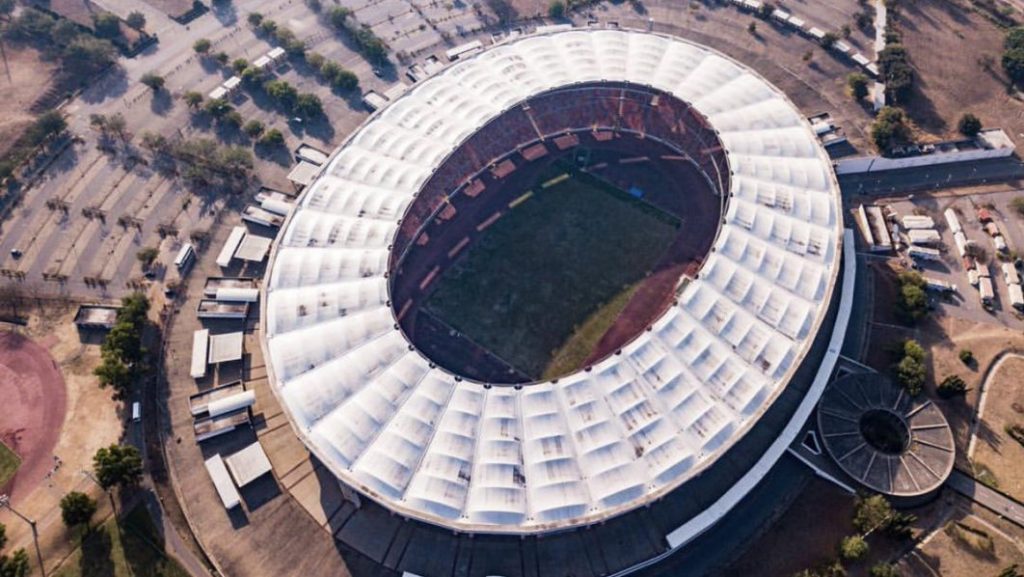
Country: Nigeria
Location: Abuja
Capacity: 60,491
This stadium is located in Nigeria, the Abuja National Stadium is located precisely in Abuja, the territory of the country’s capital, Nigeria, and turns out to be home to the national team of Nigeria (Super Eagles). With a capacity of 60,491 seats, it is a versatile and cutting-edge sports complex.
This stadium was built to house the eighth edition of the African Games that took place on October 2003. This gigantic and impressive stadium was designed and built by Schlaich Bergermann & Partner, making it one of the best stadiums in the world. African history It is a beautiful, artistic and artistic design that attests to a construction budget of $ 360 million.
#7. Nelson Mandela Bay Stadium

Country: South Africa
Location: Port Elizabeth
Capacity:
48,459
Nelson Mandela Bay Stadium is a 48,000-seat stadium in Port Elizabeth, Eastern Cape, South Africa. This is the first time a world-class football stadium is built in the Eastern Cape province. The stadium seats 48,459 people and 4,000 additional seats temporarily installed for the 2010 FIFA World Cup 2010. The stadium was also used as a concert hall.
It was designed and planned by German architects: Gerkan, Marg and Associates.
#8. Estádio 11 de Novembro
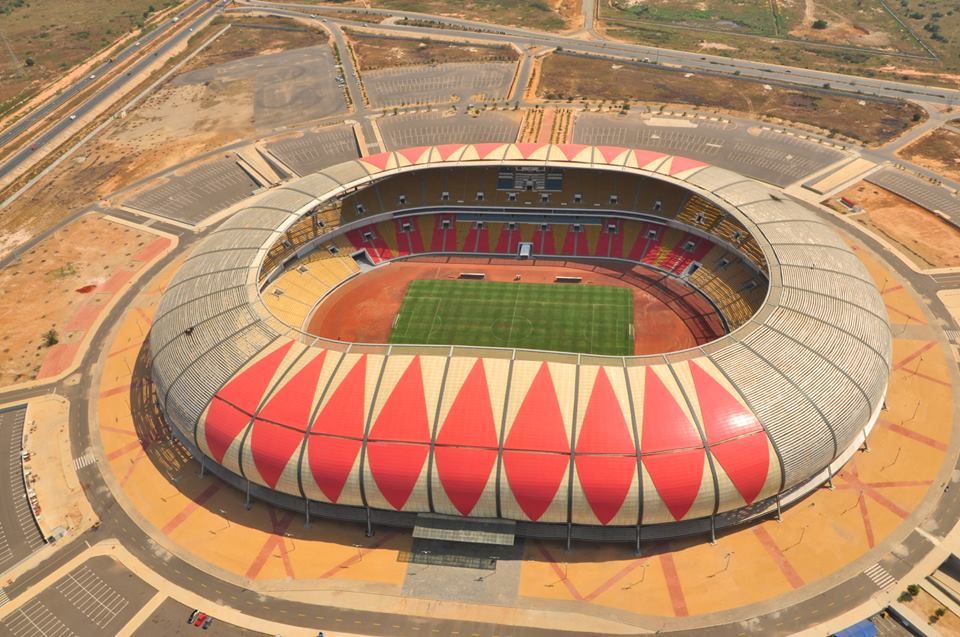
Country: Angola
Location: Luanda
Capacity: 50,000
Stadium 11 of Novembro, named for the date of independence of Angola, is located in the municipality of Belas in Luanda, Angola. It is a versatile stadium. The 50,000-seat stadium, completed in 2010 in anticipation of the 2010 African Cup of Nations, hosted nine games during this tournament, including five Group A games, a Group B game, a quarter-final, a semifinal and the final. It is currently used regularly by the Premeiro de Agosto and Petro de Luanda football clubs that play in Girabola.
#9. Peter Mokaba Stadium
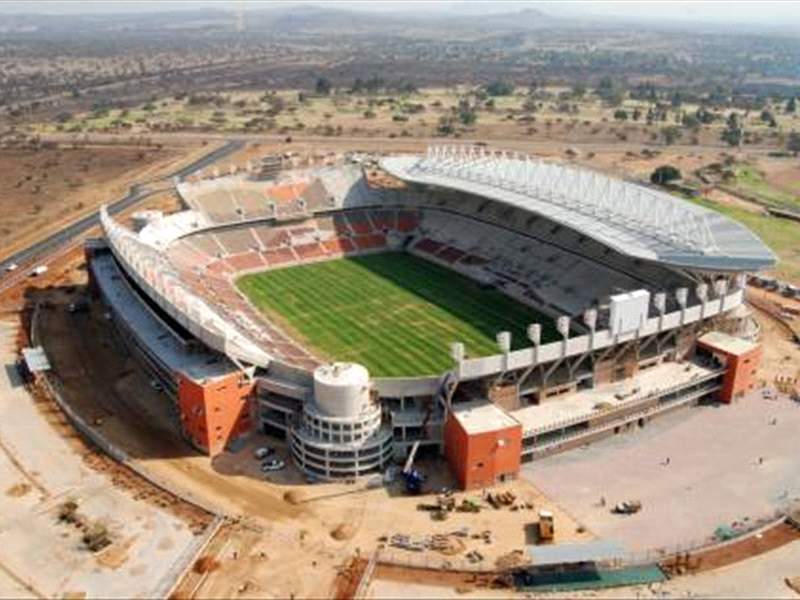
Country: South Africa
Location: Polokwane
Capacity: 46,000
Peter Mokaba Stadium is a football and rugby stadium in Polokwane, South Africa, which was named in honor of former ANC Youth League leader Peter Mokaba. The stadium is one of five new stadiums built for the 2010 FIFA World Cup. It has a capacity of 41,733 and was used for the World Cup. In March 2007, the authorities decided to build a new stadium to become the center of an enthusiastic football population. The stadium, built in the capital of Limpopo province, was named in honor of politician and activist Peter Mokaba (deceased).
The stadium has been used intensively for training and matches. Therefore, natural grass has been reinforced with artificial fibers, anchoring the ground on a stable and level surface.
#10. Mbombela Stadium
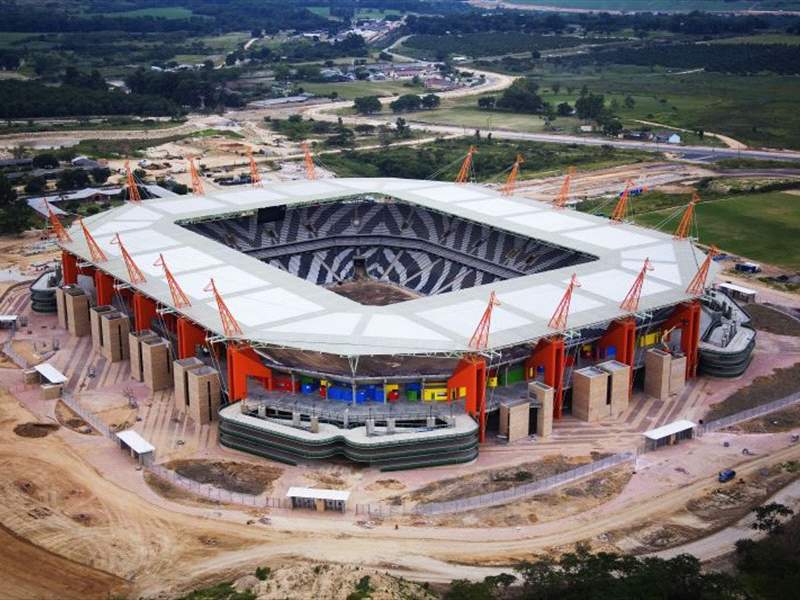
Country: South Africa
Location: Nelspruit
Capacity: 40,929
The Mbombela Stadium is a fully constructed 40,929-seat stadium located in an open field six kilometers west of Nelspruit, South Africa. Construction began in February 2007 and was completed in November 2009. The construction contract was awarded to Basil Read Construction and Bouygues Construction. The stadium is the centerpiece of a larger sports area that is offered with athletics and cricket, as well as other sports codes.
The Mbombela Stadium was built specifically for the 2010 FIFA World Cup in an open field, seven kilometers west of Mbombela, South Africa. The stadium takes its name from the municipality of Mbombela, in the province of Mpumalanga, which includes the city of Nelspruit. Mbombela means in SiSwati, “many people in little space.”
The stadium is located about 12 kilometers from Kruger-Mpumalanga airport. It has the shape of a rectangle with rounded corners, which allows 40,929 spectators to have an excellent view of the field.
The Mbombela stadium, which cost the US $150 million, was built by South Basil Read Construction and Bouygues. It opened on October 2009.
#11. Stade Olympique de Radès
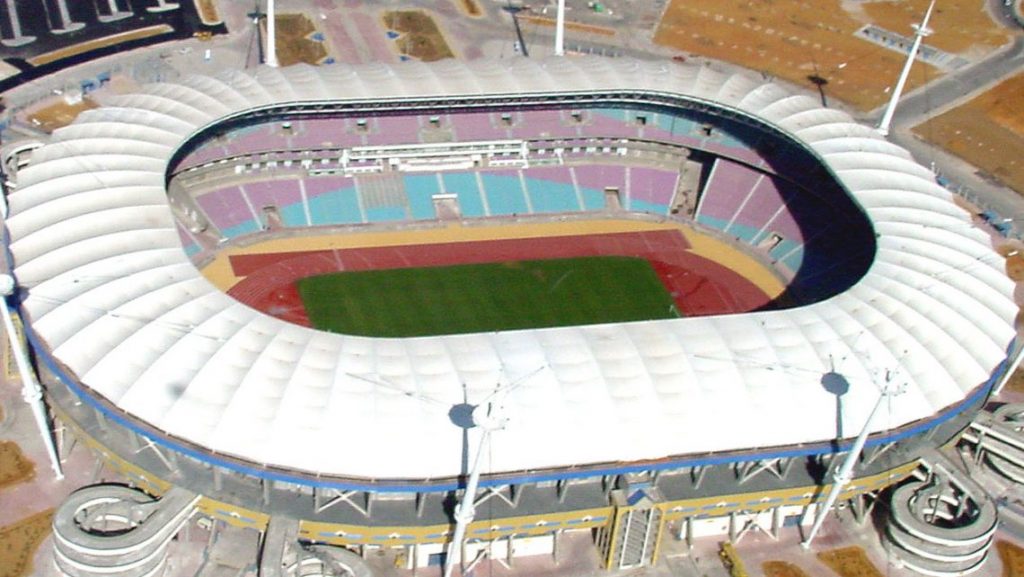
Country: Tunisia
Location: Radès
Capacity: 60,000
This versatile stadium is located in Radès, Tunisia. This magnificent masterpiece was built and opened in 2001 as one of the stadiums used for the Mediterranean Games. This makes this list not only expensive but also ecstatic.
Built for the 2001 Mediterranean Games, the interior area of 60,000 seats covers 13,000 m2 and includes a central area, 3 adjacent courts, 2 heating rooms, 2 tables, and an official 7,000-seat stand. The press gallery is equipped with 300 offices.
It was inaugurated in July 2001 for the final of the Tunisian Cup between CS Hammam-Lif and Etoile du Sahel (1-0).
READ ALSO: Top 10 Soccer clubs in Canada, Their Stadiums and Sponsors
#12. Stade des Martyrs
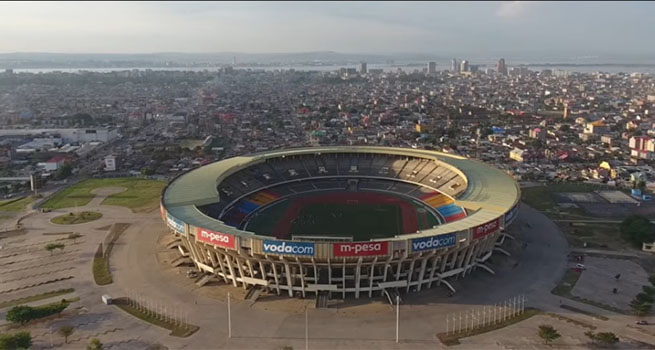
Country: DR Congo
Location: Kinshasa
Capacity: 80,000
The Pentecost Martyrs Stadium, also simply called the Martyrs Stadium and formerly Kamanyola Stadium, is a national stadium located in Lingwala, Kinshasa, capital of the Democratic Republic of Congo. It is mainly used for football matches and has organized numerous concerts and athletic competitions.
This is the stage of the national team of the Democratic Republic of the Congo and the club AS Vita and DC Motema Pembe of the football championship of the Democratic Republic of the Congo. The stadium has a capacity of 80,000 places for international matches, but 125,000 places for most matches.
The Martyrs Stadium was originally called Kamanyola Stadium. Work began on October 14, 1988 and ended on October 14, 1993. They replaced the former national stadium, the Tata Raphael Stadium.
#13. Heroes National Stadium
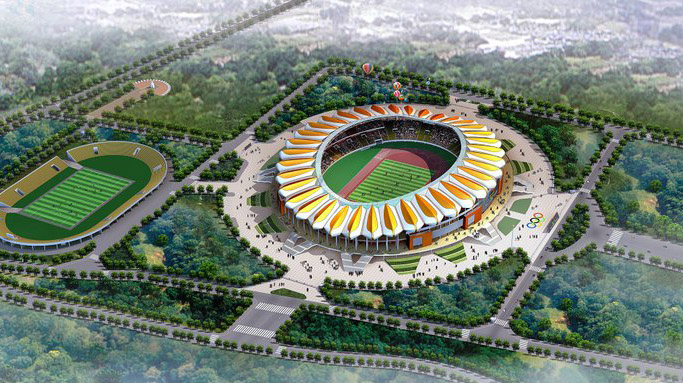
Country: Zambia
Location: Lusaka
Capacity: 60,000
The National Heroes Stadium is a multi-purpose stadium in Lusaka, Zambia, named after the 1993 Zambia national soccer team that lost its life in an air disaster on the way home from a football game. for the country It is currently used mainly for football matches and is home to home games of the Zambia football team. The stadium, opened in 2013, has a capacity of 50,000 spectators.
The Heroes National Stadium is located right next to the recently renovated Independence Stadium and the Heroes Acres memorial, where players who died in the Gabon air disaster in 1993 are buried.
#14. Stade d’Angondjé
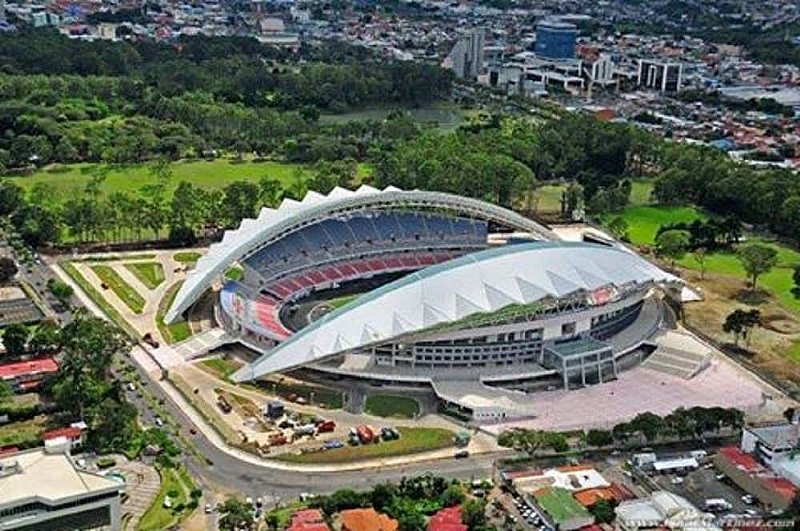
Country: Gabon
Location: Libreville
Capacity: 40,000
Located in Libreville, Angondjé Stadium (or the Libreville friendship stadium, as the name implies), is the result of a good friendship between Gabon and China. Built by the Shanghai Construction Group, it is a beautiful 40,000-seat building.
The stadium, located in the Angondjé district, was the main stadium of the African Cup of Nations in 2012 and 2017. The first time the players touched the field, it was during a match between Gabon in Brazil on November 10, 2011.
The Sino-Gabonese friendship stadium is 320 meters long, which makes it a 36,000 m2 metal structure.
#15. Chiazi National Stadium
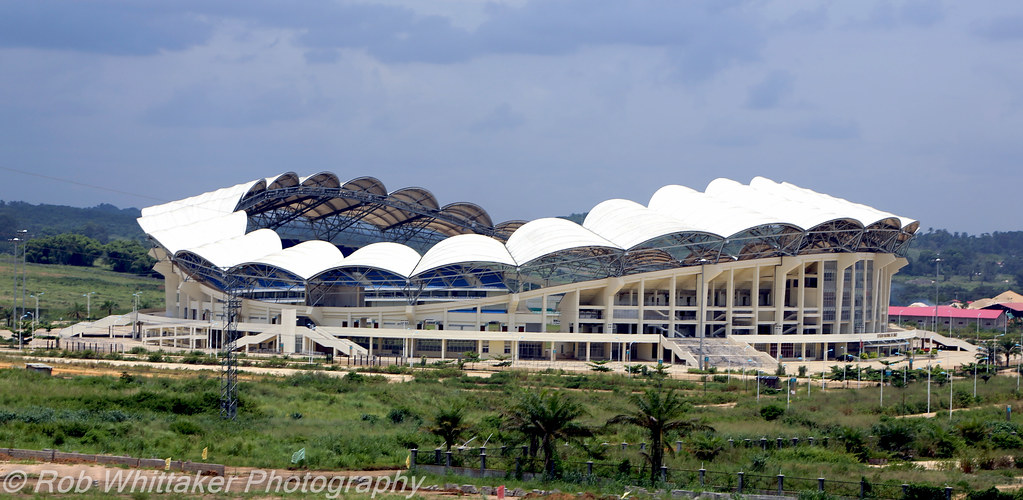
Country: Angola
Location: Cabinda
Capacity: 20,000
Located in Cabinda, Angola, the Chiazi National Stadium is a multi-sport stadium with a capacity of 20,000 seats. It was built over a period of 18 months by China Jiangsu International and cost around 80 million dollars.
The stadium opened on December 30, 2009, is mainly used for football matches, and has hosted major events such as the African Cup of Nations held in Angola in 2010. The stadium hosts the football club. Soccer Cabinda.
In Conclusion
To explain the fact that other stadiums in Africa are better than the ones mentioned above cannot be discussed. The reason for this is not far-fetched it’s because the list of the best stadiums in Africa above is ranked based on some basis or standards. Such as beautification and attractiveness, capacity, comfort, and ability to host the world’s greatest sporting events and activities of all time. Some of these stadiums have large capacities but are not very attractive to hold a competition in them.
All these factors including the maintenance factors contribute vividly to the ranking procedures. This list has been thoroughly scrutinized and endorsed by Africa .com, the official website of CAF before it is been published to the world
References
- en.wikipedia.org – List of African stadiums by capacity
We Also Recommend
- Basketball in Nigeria: History, Academy, Organization, and Team
- The Pros and Cons of VAR in the Football Match decision
- Top 8 Stadiums in Qatar for World Cup 2024 | Capacities
- Stadiums for 2026 World Cup| Canada, USA, and Mexico
- Amazing facts about 2024 World Cup in Qatar
- Who is the greatest Super Eagles Captain? Achievements and Trophies
DISCLOSURE: This post may contain affiliate links, meaning when you click the links and make a purchase, we receive a commission.




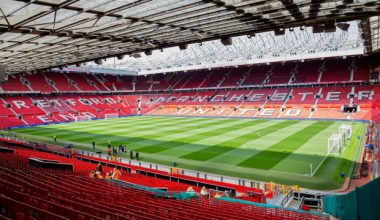
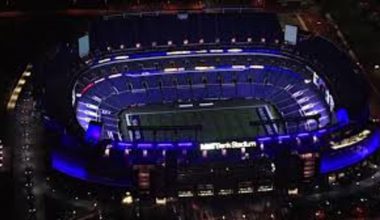
Comments are closed.